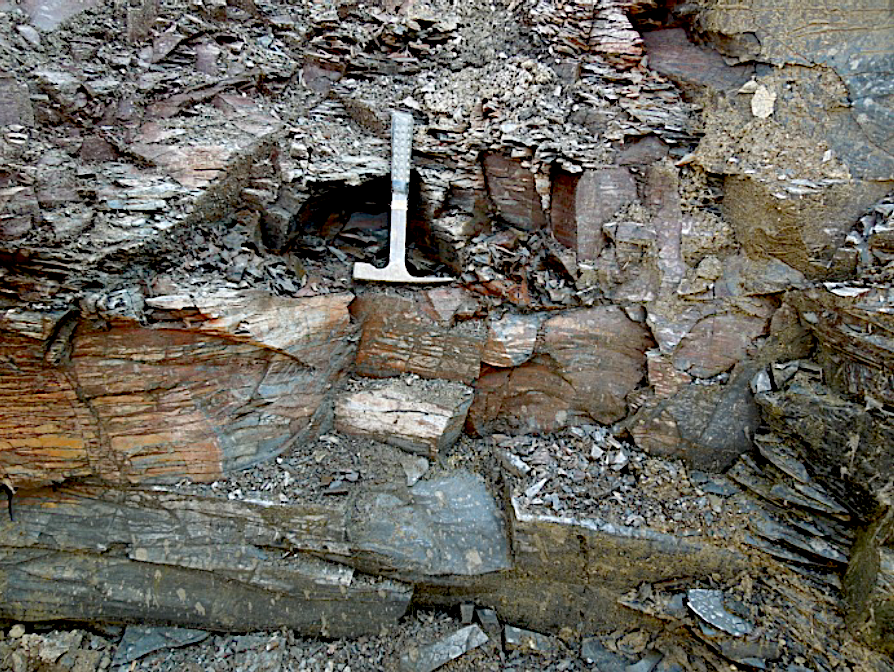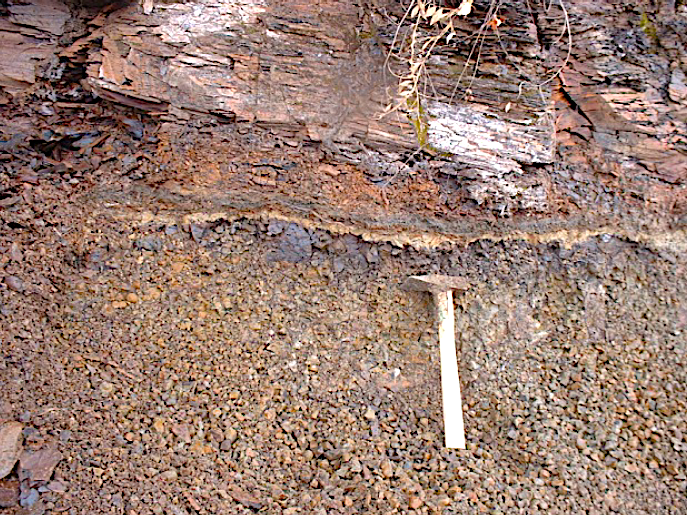Taipinglinchang Fm
Type Locality and Naming
Jiayin Basin. The Taipinglinchang Formation was erected by the Heilongjiang First Regional Geological Survey Team in 1979. The section for the designation is in Taipinglinchang of the Jiayin County of Heilongjiang (130°58′E; 48°51′31″N). [This is the lower-middle formation of Jiayin Gr .]
[Figure: Taipinglinchang Formation at type section in Jiayin, Heilongjiang Province]
Lithology and Thickness
The Taipinglinchang Formation is composed of gray microclastic rocks and oil shale, which is divided into two parts. Lower part is built up by oil shale, mudstone and clayey siltstone, forming a reversed rhythm that is from fine-grained to coarse-grained. Upper part is built up by fine-grained arkose sandstone, siltstone, silty mudstone and mudstone, forming rhythmic interbeds. It is 635.2 m thick.
Relationships and Distribution
Lower contact
The disconformable base of the formation as marked by dark gray schistose oil shale is distinguished from tuffaceous sandstone of the underlying Yongancun Fm.
Upper contact
The disconformable top as marked by siltstone is distinguished from conglomerate of the overlying Yuliangzi Fm.
Regional extent
The present formation occurs along the bank of the Heilong river from the Yongan Village to the Wuyun Town. Around the Yongan Village there crop out the central and middle parts of the formation, which are dominated by sandy mudstone, with oil shale at the base and with sandstone increasing in amount from bottom upward, with marl lenses. It is 155.3 m thick. From the Shuanghe Town to Xiangyang there crops out the upper part of the formation, which is built up by a set of variegated mudstone with sandstone, with grit at the base lying unconformably on the Yanshanian granite. It ranges from 139 to 229 m in thickness. As exposed in the borehole No.2P-shan north of the Sunhao Town, the formation is represented by a set of gray green and black mudstone and sandy mudstone with gravel-bearing sandstone, lying unconformably on the Paleozoic granite, measuring 192 m in thickness.
GeoJSON
Fossils
The formation yields floras Trapa? microphylla, Quereuxia angulata, Rhamnites marginatus, Patanus raynolasii, Taxodium sp., Sequoia sp., Metasequoia sp.; sporopollen grains Aquilapollenites sp., Proteacidites sp., Beaupreaidites sp.; ostracods Cypridea perelegana,; estheria Euestheria sp.
Age
Depositional setting
It belongs to lacustrine deposition.
Additional Information

